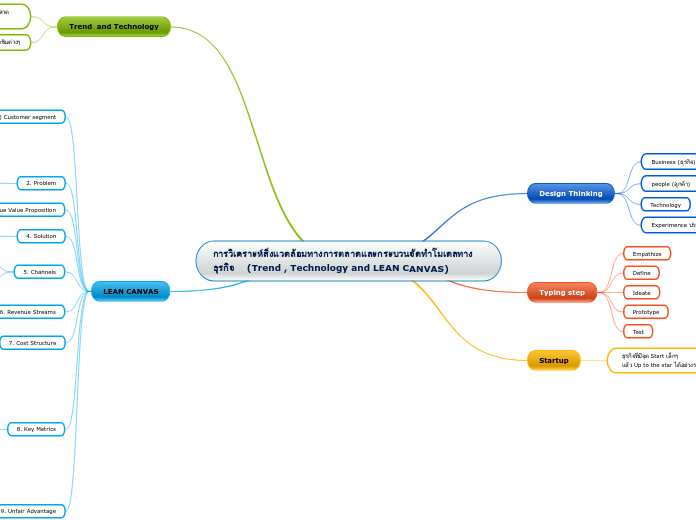I hope you enjoyed and learned a lot about swatch!! And remember... there are no limits
Swatch and O&SCM. What lessons can we learn?
Operational Innovation
Operational Innovation at swatch
Swatch as a company is based on constant redifining pre-established concepts and processes.
- They introduced a cheap Swiss watch when no one believed it was possible to be succesful with such an unconventianal product.
- They converted watches from a luxury product to an affordable fashion accesory. From a jewel to a complement.
- They fully automatized the production of watches, cutting man labor and keeping their production facilities in one of the most expensive countries in the world.
- They created a subscription model to sell watches: The swatch Club watch. A club where members receive an exclusive watch every season.
- Completely redifined watch manufacturing, reducing the number of different pieces and components of a watch by more then 75% in some cases.
The Triple-A Supply Chain
Swatch, the Triple-A Supply Chain
Agility
Agility is the word that best describes swatch´s manufacturing process. Swatch is able to respond extremely quickly to changes in demand. The Swiss manufacturer is able to adapt its desingns to seasonal fads and trends. Let´s say prints with fruits such as watermelons and pineapples are trendy this summer, swatch will make sure to have a watch with those characteristics out there.
Adaptability
Swatch, but more specially SMH, its mother company, proved to be extremely adaptable to outside changes. When the Swiss luxury watchmaking industry was suffering a lot against competition, the swatch was born to disrupt the industry.
Alignment
Swatch has a strategy of constantly exchanging information with its vendors and distributors to adjust to demand.
Mass Customization
Mass Customization
Swatch has design its manufacturing process with the operation strategy of mass customization. Apart from the thousands of different desings, swatch now offers its customers a platform where they can design their own watch, according to their personal style and preferences.
Swatch is able to personalize watches at an affordable price due to its automated factories and a flexible manufacturing process.
Check the website to design your own swatch! (click on the link I provide)
The swatch Revolution
The swatch Revolution
Hayek’s low-end product initiative was a quartz watch called Swatch. From the start, the Swatch initiative was controversial for several reasons.
1- Full vertical integration, manufacture in Switzerland.
2- A Swiss watch built with cheap materials.
3- Unique branding and marketing message.
Swatch, a success story
Swatch, a success story
The success of the Swatch brand exceeded all of the company’s expectations. In 1992 alone, the company sold 26 million Swatches; the same year, cumulative sales hit the 100 million mark, making Swatch the best-selling watch in history.
This is Hayek´s explanation of Swatch´s success:
"We are offering them a message. This is an absolutely critical point. Fashion is about image. Emotional products are about message— a strong, exciting, distinct, authentic message that tells people who you are and why you do what you do. There are many elements that make up the Swatch message. High quality. Low cost. Provocative. Joy of life. But the most important element of the Swatch message is the hardest for others to copy. Ultimately, we are not just offering watches. We are offering our personal culture."
In 2018, the swatch group surpassed 1 billion CHF in revenue.
Unique Branding & Marketing Message
Unique Branding & Marketing Message
Swatch’s marketing plan was also unique in the watch industry in its emphasis on below-the-line activities. The company had become notorious for unorthodox promotional stunts—everything from break-dancing sponsorships to celebrity endorsements. The company also used special events and product placements to promote the Swatch brand. Hayek offered this example:
"How did we launch Swatch in Germany? Did we saturate the airwaves with paid advertisements? No. Anyone can do that. We built a giant Swatch. It was 500 feet high, weighed 13 tons, and actually worked. We suspended that giant Swatch outside the tallest skyscraper in Frankfurt, the headquarters of Commerzbank."
In 1990, the company created a Swatch Collectors Club for its most ardent fans. For an annual fee of about $90, members received an exclusive collectors’ Swatch each year instead of a traditional membership card. In addition, they received a subscription to the Swatch Street Journal, a magazine produced featured the latest news and information about Swatch in particular and pop culture trends in general. Within a year, the Swatch Collectors Club had more than 50,000 members
Cheap Materials = Mass customization
Swiss watches with cheap materials
The swatch concept was to design a cheap watch, so they decided to ditch the expensive metals and jewels and encase the watches in cheap but durable plastic.
This allowed swatch to produce hundreds of different styles and designs. We can almost talk about mass customization. Swatch produced the same watch in many different colors, it kept its desings unique and irrepeatable. The Swiss company has produced thousands of different styles and collections and at a $40 price-point, the swatch becomes an affordable fashion item.
Swatch has become so quick and agile in designing and launching new collections that are able to manufacture watches for every occasion.
While the manufacturing process from conception to final production of a luxury watch can take years, swatch is able to make watches for events such as the Olympics, Christmas, Valentines Day or art and sport events.
Automation,Vertical Integration & Manufacturing in Switzerland
Automation, Vertical Integration & Manufacturing in Switzerland
Swatch was fully committed to vertical integration; that is, they were determined to build and assemble the low-priced quartz watch entirely in Switzerland.
The CEO, Hayek:
“It’s not just possible to build mass-market products in countries like Switzerland. It’s mandatory” "We must build where we live. That means focusing on labor. If we can design a manufacturing process in which direct labor accounts for less than 10% of total costs, there is nothing to stop us from building a product in Switzerland, the most expensive country in the world. Nothing.”
Swatch was also able to reduce the number of components of its watches by more than 50%. This allowed for the automation of much of the manufacturing process. This automation is key to maintain low costs and make possible to mass produce automatic watches.
The video shows the factory where the Sistem51 watch series is produced, this is the first fully automatized production of an automatic watch.
Swatch also decided to keep its production in Switzerland to optimize quality and maintain the flair inherent to all Swiss watches
swatch - swiss made
Welcome to my Mindomo!
Through this mindmap I will show you how swatch disrupted the traditional Swiss watchmaking industry and gained an important market share in a very competitive market.
Please, read the text and watch the videos in order to obtain the full information. Enjoy!
The Swiss watchmaking industry in free fall
The Swiss watchmaking industry in free fall
In addition to American watches, the irruption of the Quartz technology brought a new competitor to the market, the Japenese.
Similarly to the American watchmaker Timex, watch manufacturers from Japan and Hong Kong used mass production and cheap materials to produce very affordable watches.
As Japanese watchmakers saturated the global market with quartz watches at rock-bottom prices, Switzerland found itself unable to compete.
“The Swiss spent much of the 1970s reacting to quartz by retreating: ‘Why should we compete with Japan and Hong Kong? They make junk, then they give it away. We have no margin there.’ Of course, as we retreated, the Japanese moved up to the next layer of the cake. Then the retreat would start again.”
The emergence of low-cost competition
The emergence of low-cost competition
In 1951, an American manufacturer called U.S. Time introduced a mass produced, disposable watch, the Timex. It was simply designed, manufactured with cheap materials and, in consequence, very cheap.
By 1970, 1 out of 3 watches sold in the US were a Timex and U.S. Time was selling more watches than any other manufacturer worldwide.
Timex watches were usually advertised (watch video in the next slide) as a resistant, cheap and functional watch. Watches were no longer a luxury product, but a functional accesory that everyone could afford.
The Swiss watchmaking industry before swatch
Swiss watchmaking industry before swatch
Prior to the 1950s, watchmaking was a craft that required the skills of a master jewelry maker combined with the expertise of a micromechanical engineer. A watch typically consisted of a meticulously crafted mechanical movement with more than 100 separate components that had been assembled with great care and precision. The better the watch, the more jewels it contained; these jewels—usually synthetic rubies, sapphires, or other hard stones—enabled the watch to withstand years of mechanical wear.
Swiss watches were made of precious metals and were sold primarily through jewelers and upscale department stores; in fact, watch repair was an ongoing source of revenue for these retailers.
The Swiss dominated the watch industry, in large part because of their centuries-long history of jewelry-making expertise. Watchmaking was a source of national pride, and the “Made in Switzerland” label was a global seal of quality, status, and prestige.
Altogether, the Swiss accounted for 80% of the world’s total watch production and 99% of all U.S. imports.
Hayek´s original idea
Hayek´s original idea
Ten years ago, the people on the original Swatch team asked a crazy question: Why can’t we design a striking, low-cost, high-quality watch and build it in Switzerland? The bankers were skeptical. A few suppliers refused to sell us parts. They said we would ruin the industry with this crazy product. But the team overcame the resistance and got the job done.
— Nicolas Hayek
Origins of swatch
Origins of swatch
Swatch is a Swiss watchmaker founded in 1983 by Nicolas Hayek.
The name swatch comes from the merger of 2 words: second + watch.
This name represents exactly what Nicolas Hayek had in mind when he founded the business. The idea he had in mind was to transform the watch industry. He wanted watches to be an affordable fashion statement rather than a once-in-a-lifetime luxurious purchase. He wanted everyone to have a "second watch"









